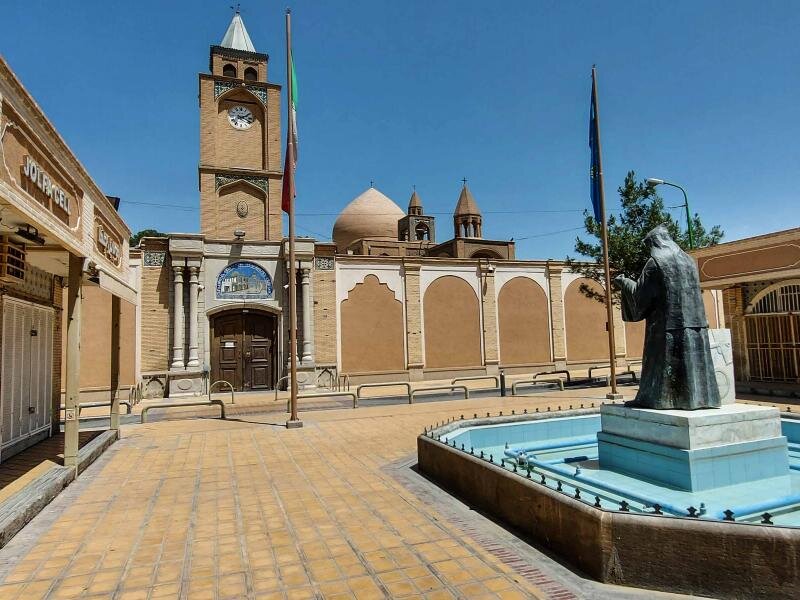400-year-old Jolfa Square to undergo restoration

TEHRAN – Isfahan’s tourism chief has revealed plans for the restoration of Jolfa Square, which is a gateway to a touristic Armenian neighborhood in the ancient city.
Hamidreza Mohaqeqian announced the plan on Saturday during his visit to the historical square in conjunction with the celebration of the 52nd founding anniversary of the Vank Cathedral’s museum, CHTN reported.
“The [New] Jolfa neighborhood, with over 400 years of history, stands as one of the most significant historical and cultural centers in southern Isfahan,” Mohaqeqian said.
“In recent years, we have successfully transformed this complex into one of the principal tourism hubs of Isfahan.”
However, given that Jolfa Square is nestled at the heart of this historical texture and requires special attention, it was decided during this visit, in collaboration with the council for the preservation of Armenian heritage in [New] Jolfa, to monitor, plan, and subsequently carry out the restoration and optimization project of this complex to restore it to its historical era, the official explained.
The quarter dates from the time of Shah Abbas I, who transported a colony of Christians from the town of Jolfa (now on Iran’s northern border) en masse, and named the village ‘New Jolfa’.
Shah Abbas sought their skills as merchants, entrepreneurs, and artists and he ensured that their religious freedom was respected – albeit at a distance from the city’s Islamic center. At one time, over 42,000 Armenian Christians reportedly lived her
Isfahan was once a crossroad of international trade and diplomacy in Iran, and now it is one of Iran’s top tourist destinations for good reasons. The ancient city is filled with many architectural wonders, such as unmatched Islamic buildings, bazaars, museums, Persian gardens, and tree-lined boulevards. It's a city for walking, getting lost in its mazing bazaars, dozing in beautiful gardens, and meeting people.
Isfahan is renowned not only for the abundance of great historical bridges but also for its ‘life-giving river’, the Zayandeh Road, which has long bestowed the city an original beauty and fertility.
The city has long been nicknamed as Nesf-e-Jahan, which is translated into “half the world”, meaning seeing it is relevant to see half the world. In its heyday, it was also one of the largest cities in the region, with a population of nearly one million.
AFM
